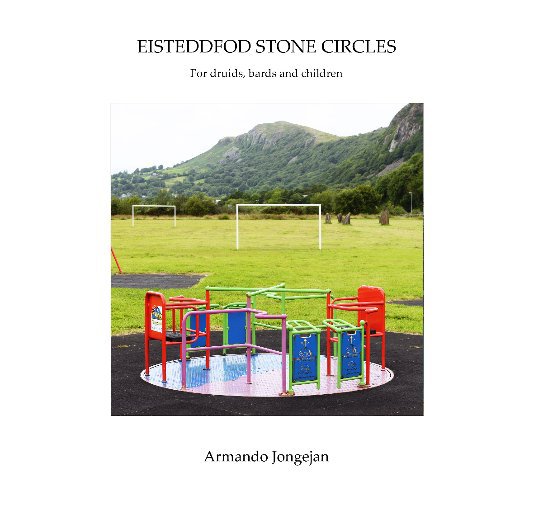Eisteddfod Stone Circles
For druids, bards and children
de Armando Jongejan
Este es el precio que tus clientes ven. Editar lista de precios
Acerca del libro
If you are surprised that they are near a playground, it is not so exceptional as these stone circles are quite new. They are modern stone circles and are erected for the annual Eisteddfod festivals. The history of the Eisteddfod can be traced back to a bardic competition held by the Lord Rhys in Cardigan Castle in 1176. The first modern event was held in 1861 in Aberdare and is traditionally held in the first week of August.
Eisteddfod is a celebration of the culture and language of Wales. The festival has a quasi-druidic flavor under the auspices of the Gorsedd of modern-day bards of the Island of Britain. If there is no stone circle, one is created at each Eisteddfod, with stones usually taken from the local area. Each stone structure is arranged in a circular formation typically consisting of twelve stone pillars (denoting the 12 former counties), a large, flat-topped stone, known as the Logan Stone, lies at the centre of the circle and serves as a platform. The portal stone to the right of the entrance points to midsummer sunrise, while that to the left indicates the midwinter sunrise.
If you are not familiar with the recent history of the Eisteddfod you may be surprised that the stone circles of Bala and Porthmadog are a part of the local environment, so close to some playground equipment, the main road, an industrial area and a residential area. It is an exceptional and inspiring place to be.
Características y detalles
- Categoría principal: Libros de arte y fotografía
-
Características: Cuadrado pequeño, 18×18 cm
N.º de páginas: 40 - Fecha de publicación: feb. 11, 2018
- Idioma English
- Palabras clave children, bards, druids, Stone Circles, Eisteddfod
Acerca del creador
Armando Jongejan (1960, Egmond aan Zee - The Netherlands) studied photography at the University of Applied Photography in Apeldoorn and he works as a freelance photographer. His photographic interest is landscape and documentary/contemporary photography. He want to o create a coherent body of work rather than a single photo. Since 1989 Armando Jongejan have had several exhibitions in galleries and (photo)museums, fe: Hasselblad Image centre (1997) in Utrecht, OFF Photo Festival Naarden 2001, 2005 (group) and 2011 and 2019 (solo), Museum of Photography Amsterdam (FOAM) (2005), Dutch Museum of Photography, Rotterdam (2008 and 2018), the Photography Museum of China in Lishui (2010), Photo Gallery Fenton House in Bath - England (2012) and also in Austria, Belgium, Czech Republic, Denmark, England, Estonia, Finland, France, Germany, Greece, Hungary, Italy and Spain. Photos are published in magazines and books. Since 1996 Armando has published seven photo books and several Blurb books.


